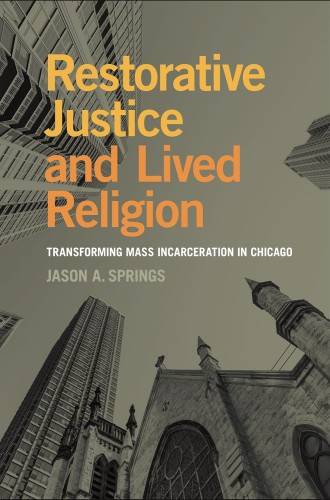The lived religion of restorative justice
Jason Springs immersed himself in justice organizations in Chicago. He offers an account of their peace circles and the hope they cultivate.

Restorative Justice and Lived Religion
Transforming Mass Incarceration in Chicago
Restorative Justice and Lived Religion is the fruit of an activist-scholar’s immersive tutoring by restorative justice organizations in Chicago. Jason Springs, who teaches religion, ethics, and peace studies at the University of Notre Dame, has written a carefully researched, multifaceted, ethical and spiritual analysis of restorative justice practices, viewed through the lens of lived religion. What emerges is a mix of thick description of restorative justice practices, an account of in-house ways of framing the aims and means of those practices with regard to social justice movements, their relation to broader ethical theories, and—what I find most original—a reading of restorative justice practices as features of an implicit lived religion.
The central spiritual practice that Springs reflects upon is the peacemaking circle, used by restorative justice organizations such as the Precious Blood Ministry of Reconciliation in Chicago’s Back of the Yards neighborhood. Peace circles are activated to foster accountability and community building between wrongdoers and those they have harmed, as well as among people who have been incarcerated or released from incarceration, or between police officers and community members who are traumatized by an abuse of police power.
Using Precious Blood and other community-based restorative justice efforts in Chicago as models, Springs develops a moral and spiritual analysis of peace circles for various ends. One is to intervene in the debate between prison abolitionists and prison reformers by demonstrating that peace circles enable critical consciousness and collective initiative-taking that lead to concrete steps toward transforming the prison-industrial complex, which Michelle Alexander has called “the new Jim Crow.” Peace circles are not merely trauma-centered therapies; they enable participation in efforts toward structural change. Springs cites as one example the successful collaborative effort among restorative justice organizations to amend Illinois law so that it now prohibits mandatory life without parole sentences for juveniles.




